Tomatoes: useful properties, harm and growing rules
Homeland tomato they call South America, in which this vegetable appeared more than 2000 years ago. Since that time immemorial, they have retained their special taste and properties. In our country, such a plant appeared in the 18th century, and was originally grown as an ornamental crop. Tomato was recognized as a vegetable much later.
Content:
- Useful properties and harm
- The best varieties of tomato
- Growing seedlings
- Transplanting seedlings into the ground
- Tomato care
Useful properties and harm
Tomato properties:
- Tomato pulp is rich in antioxidants, which are known for their anti-tumor properties.
- The constant consumption of tomatoes in food helps to normalize cholesterol levels and normalize metabolism.
- This healthy vegetable is high in serotonin, which can help lift your mood.
- Freshly squeezed tomato juice is recommended for people with vision diseases, as this drink is able to reduce intraocular pressure.
- There are many phytoncides in the pulp of tomatoes - substances that have anti-inflammatory and antibacterial properties.
Tomatoes can bring not only benefits, but also harm:
- People who suffer from diseases of the gallbladder, as well as urolithiasis, should eat such a vegetable as little as possible, due to the high content of organic acids in it.
- Tomatoes are not recommended for people suffering from arthritis and rheumatism, due to the presence of oxalic acid, which affects water-salt metabolism.
- Do not combine tomatoes and foods high in starch. This is fraught with the appearance of kidney and bladder stones.
- Due to the high acidity, such vegetables are not recommended for people suffering from stomach diseases and duodenal ulcers.
The best varieties of tomato
The best varieties of tomatoes to grow:
- White filling. This variety is recognized as one of the most productive. The bushes of such tomatoes are small. Stealing is not necessary for this sort. The fruits of these tomatoes are smooth, fleshy, round, slightly ribbed near the stalk. The weight of one mature tomato of this variety reaches an average of 120 g. Ripe fruits have a bright red color, and unripe ones are milky white.
- New product of Transnistria. Such a variety, although it ripens for a long time, has a good yield. Each bush grows small in height, with large fruits, the average weight of which is 60 g. The color of ripe tomatoes is bright red or orange. The shape is slightly elongated. The surface is smooth, with a thick and dense shell. This kind of tomato is resistant to top rot.
- Torch. This variety gives an amicable ripening of fruits and a very high yield. Each bush is medium-sized and very compact. Ripe fruits of a round shape, with a smooth surface, red in color. They are easily detached from the stalk. The mass of one mature tomato reaches an average of 100 g.
- Ermak. Such tomato are small in size. The ripe fruit has an oval shape. The skin is rather rough. Suitable for pickling and salting. The mass of one ripe tomato of this variety reaches 140 g. This type of tomato does not crack, gives a very high yield and simultaneous ripening of all fruits. In addition, these vegetables have a long shelf life.
Growing seedlings
In order to get a big harvest tomato, you need to grow a good seedlings... To do this, use special cassettes, plastic jars, etc. Before you start sowing seeds, such containers need to be disinfected. In addition, the seedlings should be provided with good lighting, regular ventilation of the air, and also constantly maintain the same temperature.
Each seed container should have holes in the bottom for drainage.
If this condition is not met, the plants will become infected with a "black leg" - an unpleasant disease, which is often susceptible to tomato seedlings. For planting this vegetable crop, compost is suitable, mixed from a mixture of peat and sand in the same ratio, or any universal substrate for sowing. You do not need to sow seeds close to each other - in this case, the seedlings will stretch out and will be very weak.
When sowing seeds immediately in a greenhouse or greenhouse, planting is carried out in small rows. This will help you make the most of your tomato lighting.
Planting tomato seeds:
- Before sowing tomatoes, the substrate is well moistened. As for the seeds, they are heated. This contributes to their disinfection, improvement of sowing qualities and will help to appear friendly and fast seedlings.
- Warm up the seeds future tomatoes are needed using variable temperatures according to the following scheme. Within two days, the heating temperature should be approximately +30 degrees. Next, tomato seeds are heated at a temperature of +50 degrees for three days.
- Seeds are sown dry or pre-soaked in a 1% solution of potassium permanganate (ordinary potassium permanganate). For this, the planting material is dipped into a container with a prepared solution and kept in it for 30 minutes. After such disinfecting treatment, the seeds are washed for at least 10 minutes under running water.
- After the sowing is done, the substrate is covered with a film or a five-millimeter layer of vermiculite. This will help keep the soil moist.
- Before the first shoots of future tomatoes appear, the temperature in the room should not exceed +23 degrees. Immediately after the seedlings hatch, remove the film. So that the still very weak seedlings do not undergo excessive evaporation, the film coating is removed in the evening.
It is necessary to water the seedlings using a fine spray jet. It is not recommended to pour over sprouts of future tomatoes strongly. In addition to all of the above, it is necessary to observe the correct growth temperature regime. After the first shoots appear, the degrees are reduced so that it is in the range from +8 to -10 at night and from +10 to -15 in the daytime. Such actions should be carried out within 72 hours. With their help, the seedlings are hardened until they are transplanted into a greenhouse or greenhouse.
Transplanting seedlings into the ground
Planted seedlings usually in late May - early June, that is, immediately after the last frosts have passed and a stable warm temperature appears. The plant is placed in small rows. Before you start planting tomato seedlings on the site, you need to make small pits on it and shed well (about 1 liter of water should go to one hole).
Another trick associated with planting a tomato is breaking off the lower leaves from the seedlings and burying them as much as possible into the ground.
This can be done up to the very middle of the plant stem. After the young tomatoes are planted, they should be watered. The hole in which the seedlings grow is lightly sprinkled with dry earth.
An excellent result is obtained by planting this vegetable crop under ordinary film shelters, as well as on a ground that is previously insulated (steam ridges). Such methods help to ensure higher yields of early tomatoes and increase their ripeness.
To create steam beds you will need:
- Pit, which must first be dug. It should be approximately 60 cm deep and 20 cm wide.
- A five-centimeter layer of manure is loaded into the resulting base for the ridges, which must be heated before this.
- From above, such a steam ridge is covered with soil, about 15 cm.
Planting tomato seedlings is done in exactly the same way as in the open field. But there is one difference: planting in the steam ridge is carried out 15-20 days earlier, around mid-May.
Tomato care
The soil between plants and rows must be loosened regularly. This must be done every 10 days. Care should be taken to prevent the appearance of a hard crust on the soil. If tomatoes are cultivated on heavy soil, then after the first two weeks after planting the seedlings in a permanent place of growth, it is already necessary to loosen them.
The very first hilling this vegetable crop is necessary within 10 days after planting young plants.
Pre-carry out watering seedlings of tomatoes. Hilling with damp earth helps new roots appear on tomato stems. Tomatoes need constant watering... This should be done according to the following scheme: from 700 to 900 ml of water per plant, depending on which stage of growth it is in. It is preferable to water the transplanted tomato seedlings in the evening and dry weather.
Throughout the summer period, tomatoes must be fertilized with organic and mineral top dressing... Pay attention to air humidity. If it is excessive, then this vegetable crop may develop unpleasant diseases - brown spot and late blight.
More information can be found in the video.



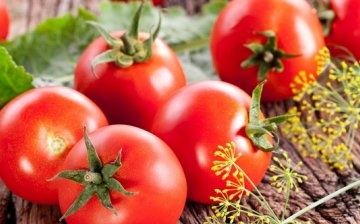
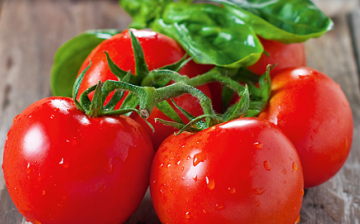


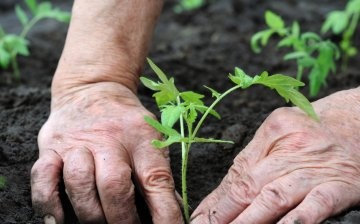







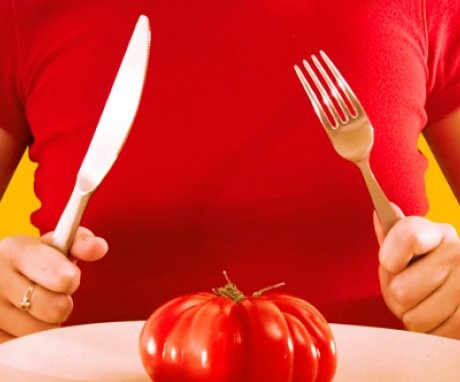

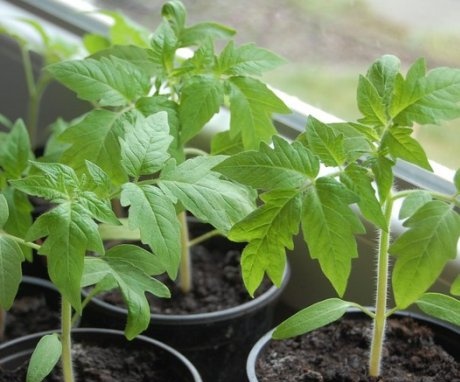
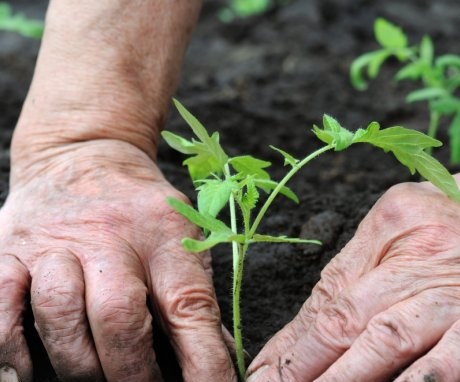

Here's the news, it turns out that I can't eat tomatoes, but I still use them with potatoes, which only aggravates my problem with urolithiasis. And what should such people eat now?
Our tomatoes only ripen in the greenhouse, and this despite the fact that we plant them for seedlings in late February - early March. Sometimes they don't even ripen. We have such a climate. And the land is poor in minerals and microelements! And you?